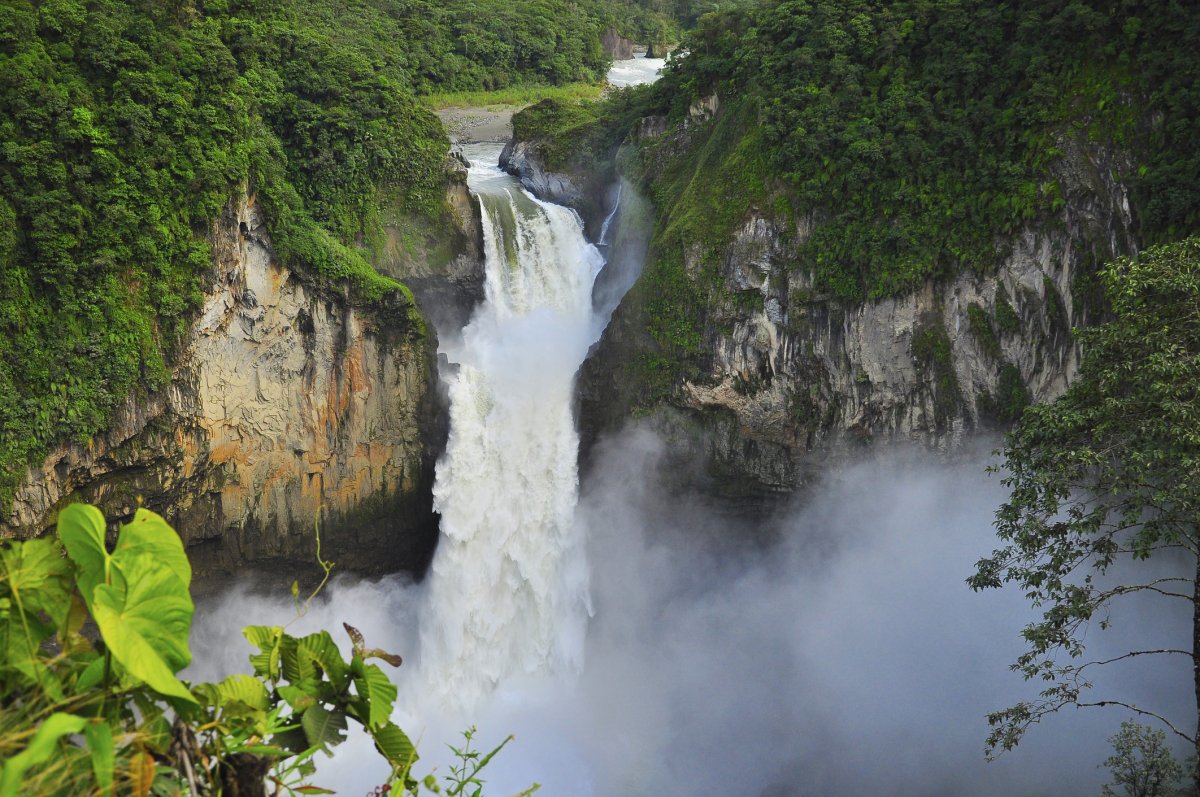Early in February, the nearly-500-foot-high San Rafael Waterfall in Ecuador—the tallest in the South American nation—appears to have disappeared. But why?
The iconic fall is found along the route of the Coca River at the intersection of the Andes Mountains and the Amazon Basin.
According to Mongabay, a sinkhole appeared in the riverbed several feet upstream, diverting water away from the original fall location, and forming three smaller waterfalls slightly upstream.
Why the sinkhole appeared, however, has remained something of a mystery. Some experts think that the hole formed as a result of natural processes, while others argue that humans may be partly to blame.
Alfredo Carrasco—a geologist and former secretary of Natural Capital at Ecuador's Ministry of Environment—is one of those scientists who thinks that the appearance of the sinkhole is a natural phenomenon, given that the river is located in an area of significant seismic and volcanic activity.
"There are many quite intense earthquakes here. In March 1987, a very strong one appeared that caused tremendous damage to the trans-Ecuadorian oil pipeline that passes right through it," Carrasco told Mongabay. "For me, the phenomenon [the collapse of the waterfall] is eminently of natural origin."
However, other researchers such as Emilio Cobo—coordinator of the South America Water Program at the International Union for the Conservation of Nature (IUCN)—point to the potential influence of nearby hydroelectric plant located upstream, which was inaugurated in 2016.
"A waterfall that has been there for thousands of years does not collapse, coincidentally, a few years after opening a hydroelectric project. These are processes that are in scientific papers and there is sufficient evidence that a dam can cause effects of this type on a river," Cobo told Mongabay.
Jorge Celi, director of the National Water Reference Laboratory at the Ikiam Amazon Regional University, also thinks the construction of the dam may have had a role to play in the appearance of the sinkhole.

"What happened is not common, it should happen once every 1,000 years, but I think it's a process that is accelerated a bit more by human activities in the basin," Celi told Mongabay.
The hydroelectric plant—which is located around 12 miles upstream from the original fall location—could be trapping sediments from the river.
"When a river loses sediments, water increases its erosive capacity, an effect called 'hungry waters,'" Cobo said. "All rivers carry eroded sediments from the soils and rocks on which they pass. All dams and reservoirs trap part of this sediment, especially heavy materials, and thus deprive the downstream river of its normal sediment load."
This so-called "hungry water" will readily absorb sediments to recover those lost by eroding the river beds and banks, in a process that could have contributed to the opening of the sinkhole, according to Cobo. However, scientists say an in-depth investigation is required to determine what truly caused the sinkhole to open.
Uncommon Knowledge
Newsweek is committed to challenging conventional wisdom and finding connections in the search for common ground.
Newsweek is committed to challenging conventional wisdom and finding connections in the search for common ground.
About the writer
Aristos is a Newsweek science reporter with the London, U.K., bureau. He reports on science and health topics, including; animal, ... Read more
To read how Newsweek uses AI as a newsroom tool, Click here.








